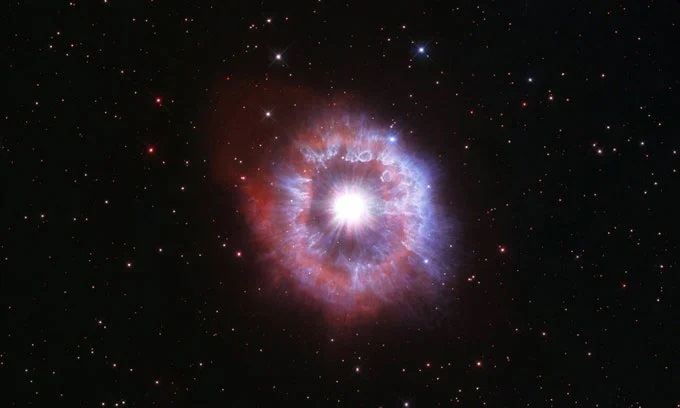The star AG Carinae is about 70 times the mass of the Sun, surrounded by a dust mantle up to 5 light years wide.
The Hubble Space Telescope captures AG Carinae, a blue variable star (LBV) star, on its 31st birthday, Space reported on April 23. Around the star is a giant dust blanket 5 light years wide, equivalent to the distance from Earth to the nearest star excluding the Sun, Alpha Centauri.
The dust mantle forms when one or more strong eruptions occurred around 10,000 years ago, causing the star’s outer layers to eject into space. This matter has a mass 10 times greater than that of the Sun.
“I like to study these stars because I am concerned about their instability. Their behavior is very strange,” said Kerstin Weis, researcher on blue variable stars at the University of the Ruhr (Germany).
In the new photo, nitrogen and hydrogen gas are red, while the blue area shows the dust structures that AG Carinae illuminates. Hubble follows the star in visible and ultraviolet light.
The blue variable star has two modes, alternating between calm and eruption. When spraying material, they become much brighter. Scientists now estimate that AG Carinae is about a million times brighter than the Sun.
The flares actually prevent the star from disintegrating, according to the European Space Agency (ESA). For a star, the pressure of the internal gravitational force and the pressure of the external radiation are generally in equilibrium. But with an unstable star, sometimes one pressure will outweigh the other. In AG Carinae’s case, external pressure briefly overcomes gravity, causing matter to be thrown into space. The eruption brought the star back to equilibrium.
Massive stars, however, can only withstand a certain number of such eruptions, which then deplete their fuel. Experts estimate that AG Carinae is 70 times the mass of the Sun and could last 5 or 6 million years.


